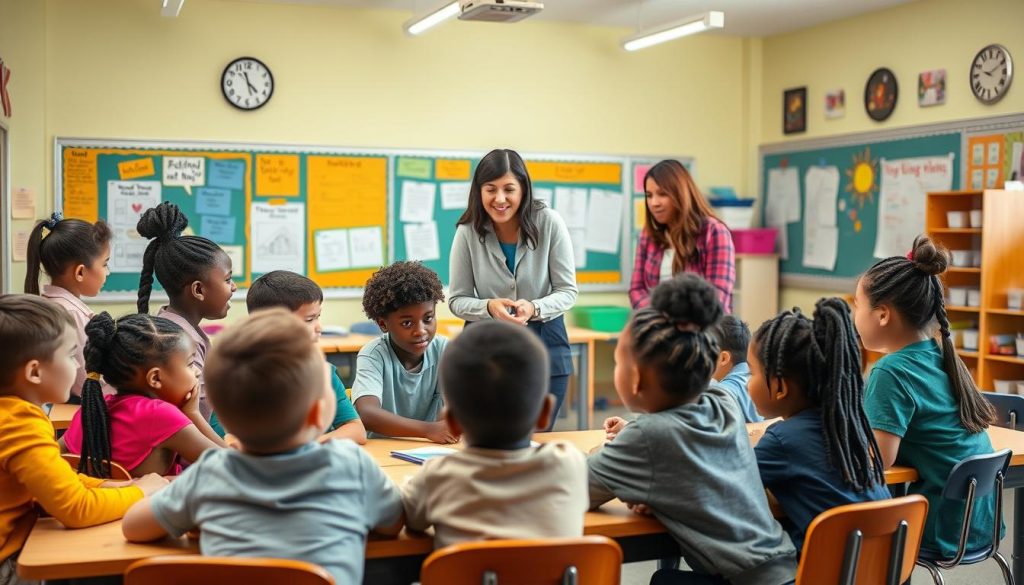Understanding the Difference: Effective Classroom Strategies for Discipline vs. Punishment
Before diving into specific strategies, it’s important to understand the fundamental difference between discipline and punishment. Punishment is reactive and focuses on making students suffer for their mistakes. Discipline, on the other hand, is proactive and teaches students how to make better choices in the future.
Punishment:
- Imposes power over students
- Creates resentment and resistance
- Focuses on past behavior
- Often damages teacher-student relationships
- Teaches students to avoid getting caught
Discipline:
- Empowers students to make better choices
- Builds respect and cooperation
- Focuses on future behavior
- Strengthens teacher-student relationships
- Teaches students valuable life skills
The shift from punishment to discipline requires developing specific teacher skills that focus on guiding rather than controlling students. These skills include effective communication, emotional intelligence, and the ability to create structured learning environments where expectations are clear. When teachers develop these skills, they’re better equipped to implement effective classroom strategies that promote positive behavior.
According to a 2019 study published in the Journal of Early Childhood Teacher Education, teachers who focus on discipline rather than punishment report less stress and burnout while their students demonstrate improved academic performance and social skills.
Proactive Effective Classroom Strategies That Prevent Behavior Issues
The most skilled teachers know that preventing behavior problems is far more effective than addressing them after they occur. Developing proactive teacher skills allows you to create a classroom environment where discipline issues are minimized from the start.
Establish Clear Expectations Together
One of the most powerful effective classroom strategies is involving students in creating the rules and expectations for your classroom. When students help establish guidelines, they develop a sense of ownership and are more likely to follow them.
Start by facilitating a discussion about what makes a positive learning environment. Ask questions like:
- How do we want to feel when we’re in our classroom?
- What behaviors help everyone learn best?
- What should happen when someone forgets to follow our agreements?
Document these agreements and post them visibly in your classroom. Refer to them consistently throughout the year. This approach requires specific teacher skills like facilitation and active listening, but the investment pays off in student buy-in.
Design an Engaging Physical Environment
The physical setup of your classroom plays a significant role in student behavior. Effective classroom strategies include designing spaces that minimize distractions and maximize engagement.
Consider these elements:
- Arrange desks to facilitate the types of interactions you want to encourage
- Create designated areas for different activities (quiet reading, group work, etc.)
- Ensure materials are organized and accessible
- Display student work to create a sense of pride and ownership
The teacher skills required here include spatial awareness and understanding how environment affects behavior. By thoughtfully designing your classroom, you create a space that naturally encourages positive conduct.
Build Strong Relationships
Perhaps the most important of all effective classroom strategies is building genuine relationships with your students. When students feel connected to their teacher, they’re more motivated to meet expectations.
Relationship-building teacher skills include:
- Learning about students’ interests outside of academics
- Greeting each student by name daily
- Finding opportunities to have one-on-one conversations
- Showing genuine interest in students’ thoughts and ideas
As one teacher noted, “The students who need the most love will often ask for it in the most unloving ways.” Building relationships gives you the foundation to implement effective discipline when challenges arise.
Enhance Your Teacher Skills with Professional Development
Looking for more ways to build positive relationships with your students? Explore our comprehensive resources for educators at all levels.
Responsive Effective Classroom Strategies When Issues Arise
Even with the best prevention strategies, behavior issues will occasionally arise. When they do, having a toolkit of responsive teacher skills allows you to address problems while maintaining student dignity and teaching valuable lessons.
Use Private Conversations
When a student misbehaves, avoid public confrontations that can embarrass them and damage your relationship. Instead, have a private conversation that focuses on understanding and problem-solving.
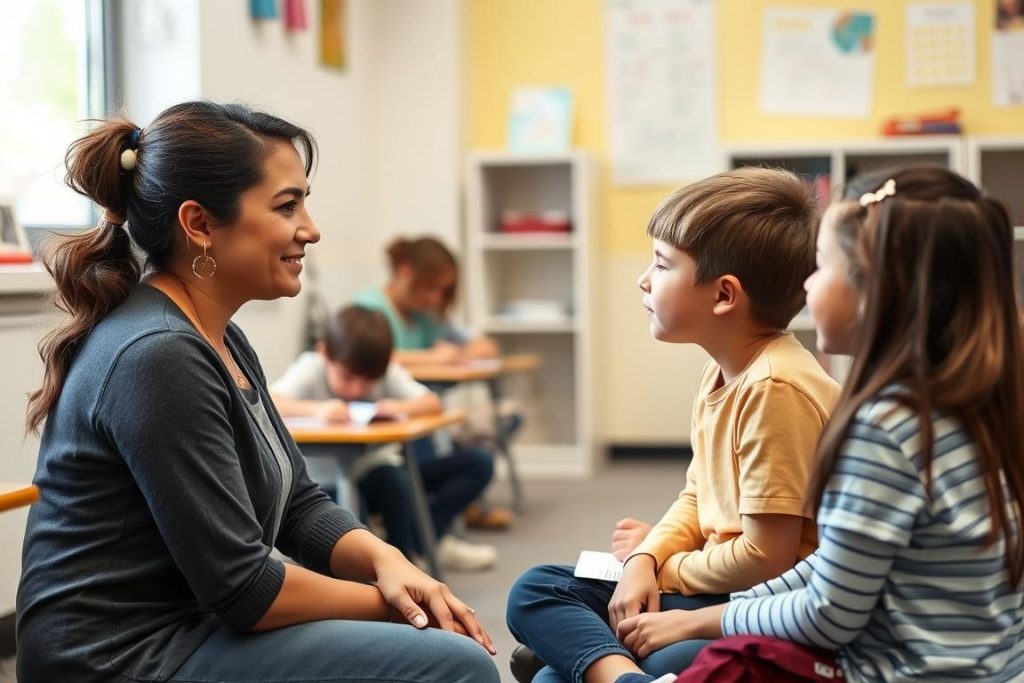
Effective private conversations require specific teacher skills:
- Ask open-ended questions to understand the student’s perspective
- Use “I” statements to express concerns
- Focus on the behavior, not the student’s character
- Collaborate on solutions rather than imposing consequences
For example, instead of saying “You’re being disruptive,” try “I noticed you were talking during the lesson. What’s going on that’s making it difficult to focus today?”
Implement Logical Consequences
When consequences are needed, ensure they’re logically connected to the behavior. This is one of the most effective classroom strategies because it helps students understand the real impact of their actions.
Examples of logical consequences include:
- If a student damages classroom materials, they help repair or replace them
- If a student disrupts group work, they practice the skills needed for successful collaboration
- If a student rushes through work carelessly, they redo it with proper attention
The teacher skills required here include creativity and the ability to identify meaningful connections between behaviors and consequences. The goal is for students to learn from their mistakes, not simply suffer for them.
Teach Self-Regulation Skills
Many behavior issues stem from students’ underdeveloped ability to manage their emotions and impulses. Effective classroom strategies include explicitly teaching self-regulation skills.
Consider implementing:
- A calm-down corner with tools for emotional regulation
- Regular class meetings to discuss social-emotional challenges
- Mindfulness practices at key transition points
- Role-playing scenarios to practice appropriate responses
These approaches require teacher skills related to emotional intelligence and modeling. By teaching students how to manage their emotions, you’re giving them tools that will benefit them throughout life.
Master Effective Discipline Techniques
Ready to transform your approach to classroom management? Our comprehensive guide provides step-by-step strategies for implementing effective discipline in your classroom.
Consistency: The Key to Effective Classroom Strategies
Consistency is perhaps the most crucial element in implementing effective discipline strategies. Students thrive when they can predict how their environment will respond to their behavior. Developing consistent teacher skills helps create a sense of security that allows students to focus on learning rather than testing boundaries.
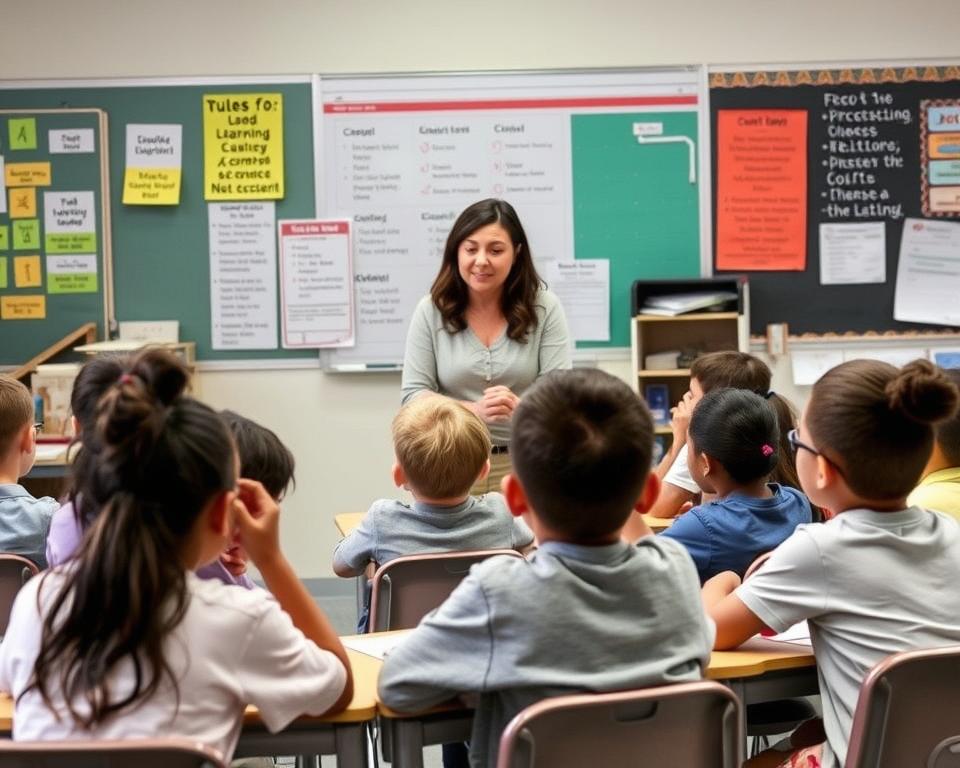
Be Consistent Across Settings
Effective classroom strategies should apply consistently whether students are in the classroom, cafeteria, playground, or on field trips. This consistency helps students internalize expectations rather than seeing them as arbitrary rules that only apply in certain contexts.
Teacher skills for cross-setting consistency include:
- Clearly communicating expectations before transitions
- Using the same language and signals across environments
- Collaborating with specialists and other staff to align approaches
- Recognizing when students meet expectations in challenging settings
Be Consistent Across Time
Maintaining consistent expectations throughout the school year is equally important. Many teachers start strong but gradually become less consistent as the year progresses.
To maintain consistency over time, develop these teacher skills:
- Regularly revisit and reinforce classroom agreements
- Use visual reminders of expectations
- Reflect on your own consistency and identify areas for improvement
- Plan for challenging periods (before holidays, end of year) when consistency is most important
Be Consistent Across Students
Perhaps the most challenging aspect of consistency is treating all students fairly. This doesn’t mean treating all students identically—different students have different needs—but it does mean applying the same principles and standards to everyone.
Teacher skills for equitable consistency include:
- Examining your own biases and how they might affect your responses
- Creating systems that ensure you’re giving attention to all students
- Being transparent about how and why you might differentiate approaches
- Inviting feedback from colleagues about your consistency
Remember that consistency doesn’t mean rigidity. Effective classroom strategies allow for flexibility within a consistent framework, responding to individual needs while maintaining core principles.
Leveraging Technology for Effective Classroom Strategies
In today’s digital world, technology can be a powerful tool for implementing effective discipline approaches. The right digital tools can help you track behavior patterns, communicate with students and families, and provide engaging alternatives to traditional discipline methods.
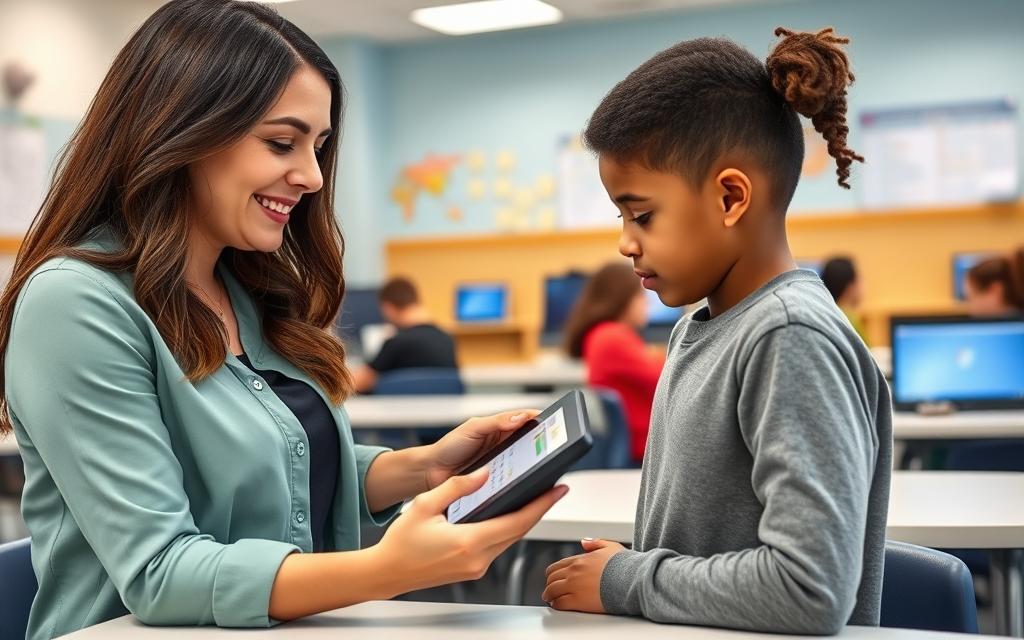
Digital Behavior Tracking
Apps and platforms that allow you to track student behavior can provide valuable data for identifying patterns and measuring improvement. These tools require specific teacher skills related to data analysis and digital literacy.
Consider using digital tools to:
- Record positive behaviors to reinforce them
- Identify times of day or activities when behavior challenges increase
- Share behavior data with students to involve them in goal-setting
- Communicate progress with families in real-time
Digital Communication Tools
Effective classroom strategies often involve clear communication with both students and families. Digital communication tools can streamline this process.
Teacher skills for digital communication include:
- Sending positive messages about student behavior
- Creating digital classroom newsletters that highlight expectations
- Using translation features to communicate with multilingual families
- Maintaining appropriate professional boundaries in digital spaces
Engagement Through Educational Technology
Sometimes, behavior issues stem from disengagement. Educational technology can provide alternative ways for students to engage with content, potentially reducing behavior problems.
Consider how these teacher skills might help:
- Using interactive digital activities for students who struggle with traditional instruction
- Providing choice through technology options
- Creating digital break activities for students who need movement or sensory input
- Using gamification to motivate positive behavior
While technology can enhance your effective classroom strategies, remember that it should supplement, not replace, the human connection that forms the foundation of positive discipline approaches.
Continue Your Professional Growth
Developing effective teacher skills is an ongoing journey. Explore our continuing education opportunities designed specifically for K-12 educators.
Overcoming Challenges in Implementing Effective Classroom Strategies
Shifting from punishment to discipline isn’t always easy. You may encounter resistance from students accustomed to traditional approaches, pressure from colleagues or administrators with different philosophies, or your own ingrained habits. Developing resilient teacher skills helps you navigate these challenges.
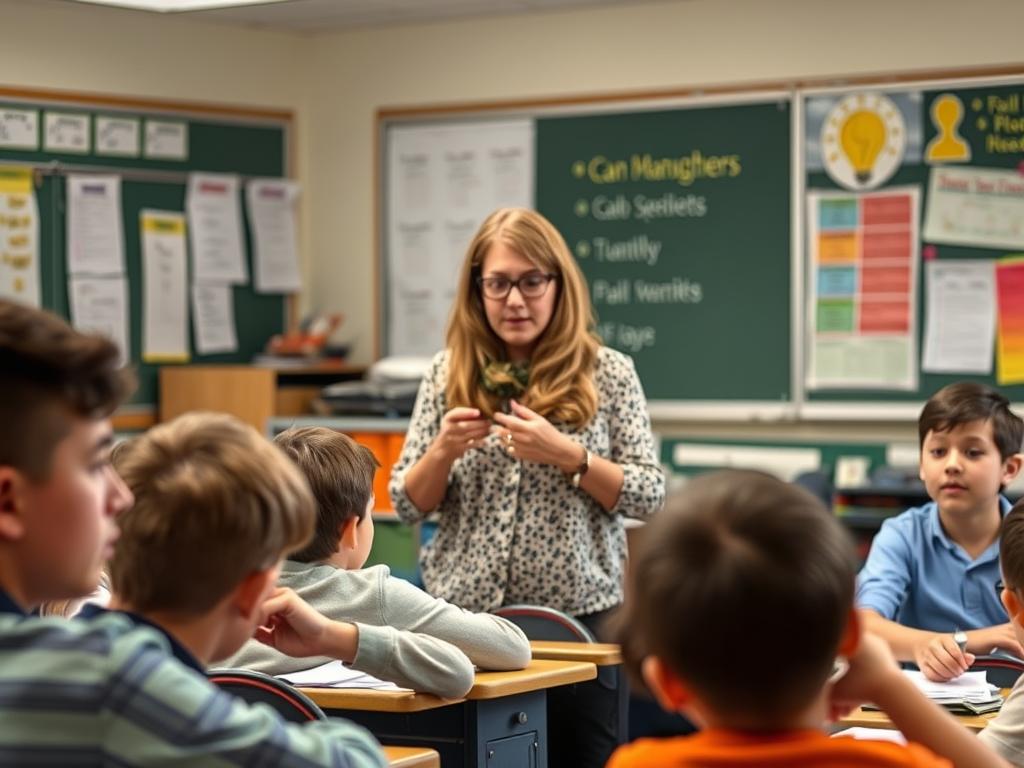
When Students Test Boundaries
When you implement new discipline approaches, students may initially test boundaries to see if you’re serious about the change. This is normal and doesn’t mean your strategies aren’t working.
Teacher skills for navigating this challenge include:
- Remaining calm and consistent during testing periods
- Acknowledging that change takes time
- Celebrating small improvements rather than expecting perfection
- Using moments of testing as opportunities to reinforce expectations
When Colleagues Have Different Approaches
You may work with colleagues who take a more traditional, punishment-oriented approach to behavior management. This can create confusion for students who move between different classrooms.
Teacher skills for this situation include:
- Clearly explaining your approach to colleagues without judgment
- Finding common ground where possible
- Sharing successes that might inspire others to try new approaches
- Maintaining your principles while respecting others’ autonomy
When You Fall Back Into Old Habits
Even the most committed teachers occasionally slip back into punishment-oriented responses, especially during stressful moments. When this happens, view it as a learning opportunity rather than a failure.
Teacher skills for personal growth include:
- Reflecting on triggers that lead to reactive responses
- Developing personal strategies for maintaining composure
- Modeling how to acknowledge and learn from mistakes
- Seeking support from mentors or professional learning communities
Remember that implementing effective classroom strategies is a journey, not a destination. Each challenge you overcome strengthens your teacher skills and benefits your students in the long run.
Conclusion: Embracing Effective Classroom Strategies for Lasting Impact
The shift from punishment to discipline represents more than just a change in classroom management techniques—it’s a fundamental reimagining of the teacher-student relationship. By implementing effective classroom strategies focused on teaching rather than controlling, you create an environment where students can develop the skills they need for success both in and beyond the classroom.
The teacher skills you develop through this approach—communication, emotional intelligence, consistency, and problem-solving—will serve you throughout your career. More importantly, they’ll serve your students by showing them what it means to be treated with dignity and respect, even when they make mistakes.
As you continue your journey toward effective discipline, remember that small changes can make a big difference. Start with one strategy that resonates with you, implement it consistently, and build from there. The positive changes you’ll see in your classroom culture will reinforce your commitment to this approach.
Transform Your Classroom Management Approach
Ready to fully implement effective discipline in your classroom? Our comprehensive guide provides everything you need to make the shift from punishment to discipline, with practical strategies you can start using immediately.
